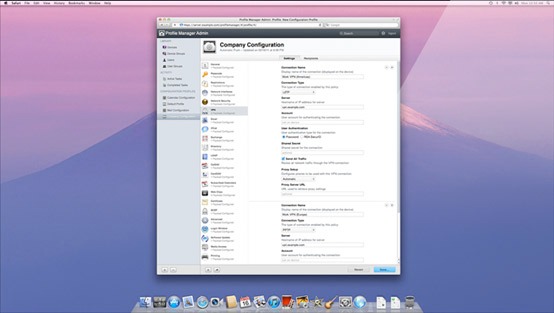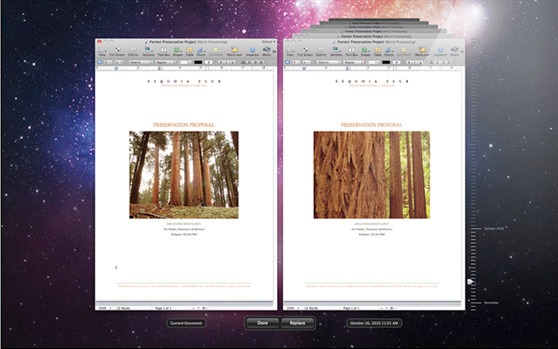Steve Jobs revealed few details about Mac OS X 10.7 Lion at the "Back to the Mac" gathering on Apple's Cupertino campus late last year. But most recently the company began seeding a preview of the operating system to its developer program members, giving us a chance to see where OS X is headed before it becomes available to the general public this summer.
Between the iOS-like features we saw back in October and what we are seeing now, it's clear Apple has drawn a lot of inspiration from its popular iPhone and iPad devices, making significant changes to OS X and adding features that are focused on simplifying the overall experience for both new and longtime Mac users.
Although looking at TechSpot's audience profile, Windows users overwhelmingly outnumber those using Macs, it's hard not to acknowledge Apple's influence on the whole industry and how its approach to computing could affect Microsoft's plans for Windows 8. Last time we heard the next iteration of Windows is at the very least a year away from release.
On that same note, considering that OS X's last major release, Snow Leopard, was not focused on new end-user features, Mac OS X Lion appears to be a more significant release in terms of functionality, user interface and workflow improvements. We've compiled a list with several of the changes and new features disclosed so far. Read on for a quick tour of what's new.
Snow Leopard was the first Mac operating system to not work on PowerPC machines, yet it still ran PowerPC software through Rosetta. With OS X 10.7 Lion, Apple is dropping PowerPC emulation altogether. Most modern applications have already been built to work on Intel machines, but users can determine if they're still running old PowerPC software by going into Applications -> Utilities -> System Profiler -> Applications and viewing "By Kind".
Previously sold as a separate $499 package, the operating system's server component will now be a core feature of the base OS X 10.7 Lion distribution at no extra cost. Users will be able to provision any Mac with Lion as a server through a guided setup process, enabling local and remote administration --- for users and groups, push notifications, file sharing, calendaring, mail, contacts, chat, Time Machine, VPN, web, and wiki services --- all in one place.

Apple has already started incorporating flash-based storage into its Macs, but with OS X Lion it is finally adding support for the TRIM command. The feature basically enables the operating system to inform an SSD which blocks of data are no longer considered in use, so they can be wiped internally. The result should be snappier SSD performance over time. It's a long overdue addition that has been supported by Windows 7 since its debut.
FileVault has been overhauled in OS X 10.7 and now encrypts the whole disk instead of just the home directory. Everything is secured in the background while you work using XTS-AES 128 data encryption at the disk level. FileVault can also encrypt external drives and provides the ability to wipe all the data from your Mac. Users that enable drive encryption will only be able to access the drive's contents with their login password or a recovery key provided by the system. The latter apparently can be stored on Apple's servers just in case you lose it.
Essentially an iOS-style app launcher. Clicking the Launchpad icon in your Dock will show a grid of all the apps on your Mac. From this view you can swipe between pages of installed applications, group apps in custom folders, and move things around from one page to another, just like in iOS. Launchpad also integrates well with the Mac App Store: whenever you install an app through the store, it will automatically be added to Launchpad instead of the Dock. Users can still resort to the usual Finder, Dock, and Spotlight for quick access to frequently used apps if they prefer, but Launchpad will likely appeal to new Mac users coming from iPad or iPhone/iPod touch devices.

In a departure from the long-standing windows UI model, Apple is pushing hard for developers to build full-screen views for their programs in Lion and mimic the no-distractions way of displaying apps in iOS. Switching a program to full screen opens it in a dedicated space (virtual desktop) by default, so you can quickly switch between the desktop and open full-screen apps. Safari, Preview, Mail, iCal and iPhoto can already go full-screen in OS X 10.7.

Allows users to wirelessly transfer files between nearby Macs running Lion. Opening the AirDrop panel through the Finder sidebar makes your machine discoverable to other machines with AirDrop open, and swapping files is as simple as dragging and confirming. Once accepted, the file transfers directly to the person's Downloads folder. Users don't need an Internet connection or being on the same Wi-Fi network, as their Macs will communicate peer to peer. Whatever Microsoft had in mind for Windows 7's Homegroups, this sounds much better and hassle-free.
A unified interface for Expose and Spaces that comes up with a three-finger swipe up (if you don't mind the accumulating complexity of gestures). Instead of showing all windows as Expose did, Mission Control groups similar folders and gives you a bird's-eye view of your Spaces, full screen apps, desktop and the Dashboard – if you set it to appear as a Space.

OS X Lion introduces a number of new multi-touch system gestures that make using the OS with a trackpad more intuitive. Apple borrowed some concepts from its iPad when it comes to pinching or tapping to zoom in Safari, while a three-finger swipe from the left or right lets you move between active Spaces or full-screen apps like moving between iOS home screens. Additionally, doing a three-finger swipe up brings up the new Mission Control.
A minor change that contradicts how the Mac UI has behaved for years, so it will probably make a difference to Mac users. Finder windows and other applications that support resizing can now be resized from any edge or corner. In addition, standard modifier keys are also supported, so holding Shift while resizing a window from any edge will constrain the window resizing to its current aspect ratio, while holding Option resizes the window from its center point.
Taking a page from iOS, applications on Mac OS X are now able to save state on exit and pick up right where they left off – even after a restart. Developers will have to build the functionality into their own programs, but for now built-in apps like TextEdit can quit without saving and re-open to the exact same state it was before. Apple is going after a paradigm shift where file and app management is less important for users to worry about. We look forward to see how this is handled on more complex, memory intensive applications.

Auto Save will allow apps to save changes to documents as you work (think Gmail or Word on steroids), while Versions brings the continuous backup concepts and interface of Time Machine to all documents. You will be able to step back through the history of your files and easily revert to a previous iteration. There's also a lock function to prevent data from being saved automatically if you don't want to record changes to a particular document while you work.

A trivial change on the surface, with the potential of becoming so much more down the line. In OS X 10.7 running applications are no longer marked with an indicator light in the Dock (by default). The notion is that multitasking could be made completely seamless to the user, not having to worry whether an application is already running or not, particularly as they begin to support Auto Save.
Again, we suspect there will be an inherent limitation to how fast you can access programs that haven't been loaded yet into memory, however OS X Lion is meaning to improve system resources management to enhance the overall user experience.
---
Mac OS X Lion is set to be released this summer, marking the eighth major release of the operating system. So, what's your favorite feature? Did we miss anything big? Has the Apple camp tempted you on the desktop or mobile side already? Let us know in the comments.